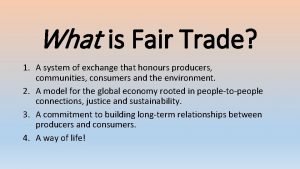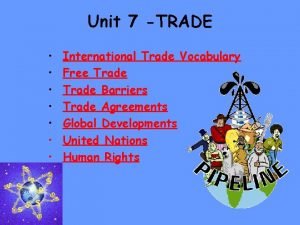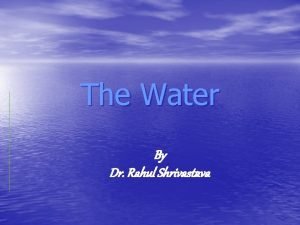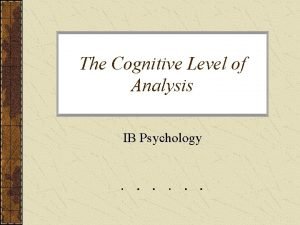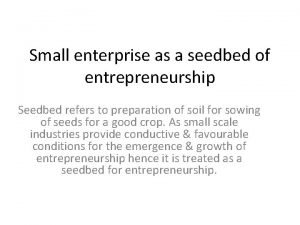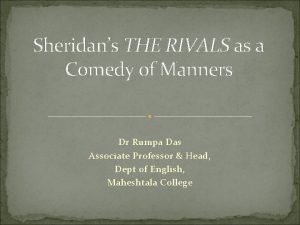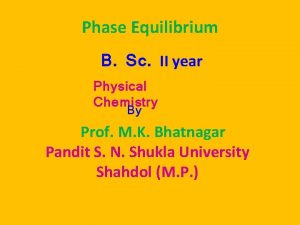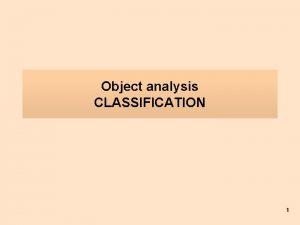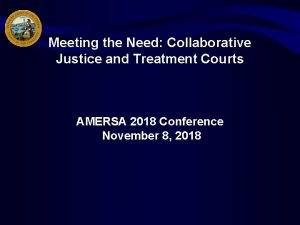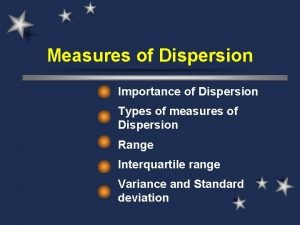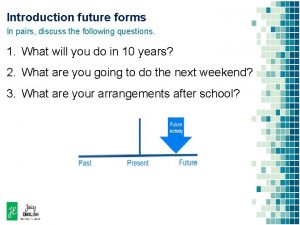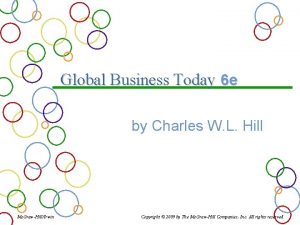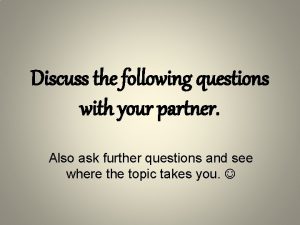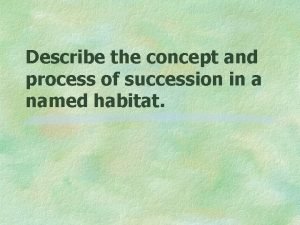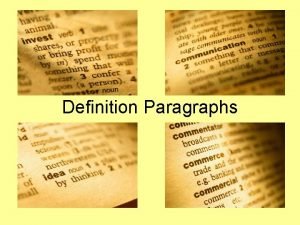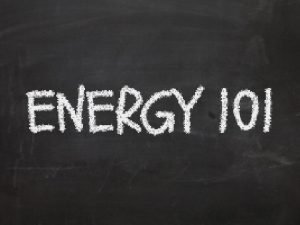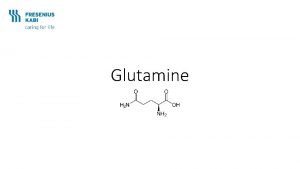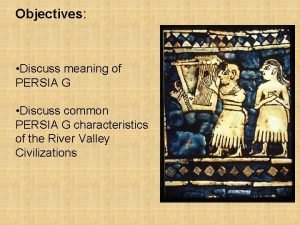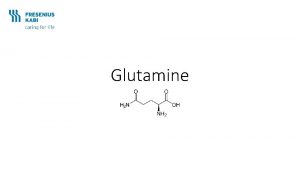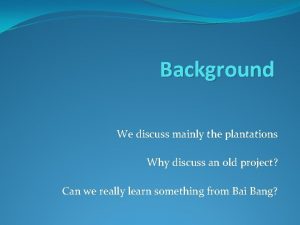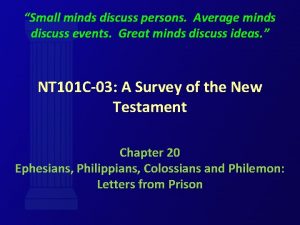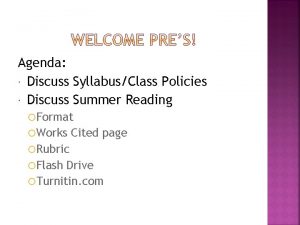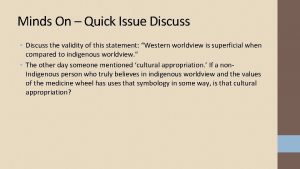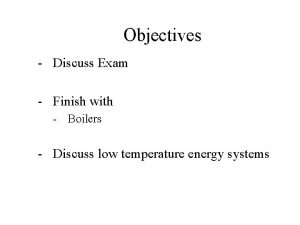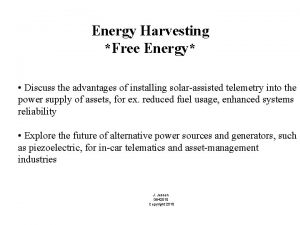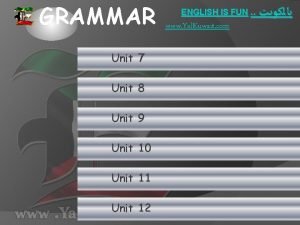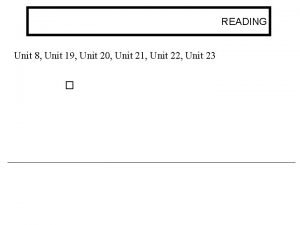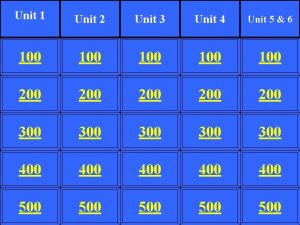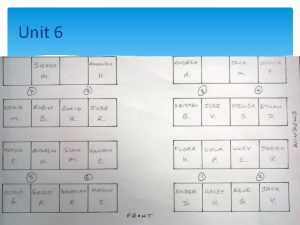Unit 3 A Energy What is Energy Discuss












































- Slides: 44

Unit 3 A- Energy

What is Energy? • Discuss: What forms of energy can you think of? How would you define energy? • #1 Use your terms list to define energy. • Energy can be defined as the ability to do work.

Work • I work at Ramstein middle school. You work on your homework. Your dad does some work in the kitchen. Your sister works at the BX. • This is how we normally think of work in our everyday lives. But, the scientific definition of work is completely different!! • Let’s read together from page 570 in the textbook

WORK • #2 Define work as it is defined in your terms list. What unit is used to measure work? • Work is done on an object if force is used on the object AND the object moves a distance in the same direction that the force was applied • Work is calculated as force x distance • Let’s play a game… Is this work? ?

Is this work? • Student A uses force (push, pull, lift) to do work on Mrs. Naglack’s mini-fridge. • Student B lifts a book over his head. Did he do work? • Student C pushes as hard as she can against the wall. Was work done? • Student D runs around the classroom. Did he do work? • Student E picks up a book and carries it around the classroom. When was she doing work?

Calculating work Work is calculated as force x distance The unit for work is a Joule The unit force is a Newton The unit for distance must be in meters A Newton is roughly the force that is need to lift an apple • So…. . Lifting one apple, one meter = 1 Joule • 1 N x 1 m = 1 J • • •

Let’s Practice • Allen used 80 N of force to move a box 1 meter. What amount of work was done? – 80 N x 1 m= 80 Joules or 80 J • Trisha used 10 N of force to move a textbook 10 m. What amount of work was done? – 10 N x 10 m= 100 J

Potential v. Kinetic Energy • Remember --- Energy is needed to do WORK • Discuss: Does a rock resting at the top of a hill have energy? Does a rock rolling down a hill have energy? • YES!!!!!! • The rock resting at the top of the hill has potential energy. The rock rolling down the hill has kinetic energy.

Potential Energy/ Kinetic Energy

Poor little man!

How much?

Let’s Sing! Yes…. . This is happening! • https: //www. youtube. com/watch? v=vl 4 g 7 T 5 g w 1 M&t=1 s

Energy Transformation • Energy is the ability to do _______ • Energy is neither created nor destroyed, this is known as the _____. Energy just changes from one form to another. • Let’s look take a look at Mechanical Energy!

Mechanical Energy • Mechanical energy is energy due to the motion and position of an object. • ME = KE + PE (kinetic energy + potential energy) • If you are a student and…

you ask a teacher about mechanical energy, she is going to show you some roller coaster…

If you ask her how to calculate mechanical energy, she is going to talk about mass and speed… • Discuss: If a race car is travelling at a speed of 9 meters per second a baseball is thrown by a pitcher at 45 meters per second. Which has more mechanical energy? WHY? • The race car has significantly more mechanical energy because it has more mass.

Once she tells you more about mass, she is going to compare it to weight… • #4 Define mass. • Mass is the measure of an object's resistance to acceleration (a change in its state of motion) when a force is applied • Discuss: What is the difference between mass and weight? Are they the same? • https: //www. youtube. com/watch? v=gjf. LI 7 a. JKm. Q • https: //www. youtube. com/watch? v=PEQz. Abiz. M Ys

Since she is still defining mass, she will definitely talk about matter… • We defined mass earlier as the amount of matter in an object. SOOOOOO… now what is matter? ? • Matter is everything around you…. matter is ANYTHING that has mass and takes up space

When she talks about matter, she WILL mention atoms…. • All matter is built by building blocks called atoms. These atoms are also made of matter! • Discuss: What do you already know about atoms? • Atoms are made-up of protons, neutrons and electrons. These particles are called subatomic particles. Sub= below Let’s take a look

Calcium Oxygen

When she tells you about atoms, you will probably ask how small they are… • https: //www. youtube. com/watch? v=y. QP 4 UJh Nn 0 I

Once you find out how small atoms are, you will need to know that they bond together… • When atoms combine, they form molecules. • Let’s look at the molecule for sugar –YUM! • http: //www. ducksters. com/science/molecules. php

Now that they are bonding together, they will form more matter… • And since they are matter, then they will definitely have mass and, therefore, effect the amount of mechanical energy in an object.

Mechanical Potential Energy • The energy an object or system has due to its POSITION.

Types of Energy

Mechanical Kinetic Energy • The energy of an object or system due to its MOTION.

Radiant or light Energy • Radiant energy is the energy carried by electromagnetic waves. The type of energy from the sun. • Radiant = Light (but it isn’t always visible) • Examples are light, sunlight, x-rays, UV light (invisible)

Chemical Energy • Chemical energy is potential energy

Electrical Energy • Discuss: When do we use electrical energy? What would happen if the electricity went out at our school? Describe how electrical energy works (use your terms list to help you)


Electrons on the move • Current electricity is negatively charged electrons moving along a closed circuit. We will discuss a lot more about electrical energy in unit 3 B.

Nuclear Energy • Nuclear power plants use the heat released from fission to make electricity. By splitting uranium atoms into two smaller atoms, the extra energy is released as heat.


Thermal (Heat)Energy • Heat energy comes from rapidly moving molecules. Heat transfers from…… • As we learned in the last unit, heat transfers by conduction, convection and radiation.

Conduction, Convection or Radiation

Sound Energy • Sound energy is the energy produced by vibrating sound waves

Magnetic Energy • Energy causing a push or pull

Gravitational Energy • Energy of place or position

Elastic Energy • Potential energy stored in objects that are stretched

The Law of Conservation of Energy • Discovered and documented in 1840 by James Joule • The Law of Conservation of Energy states: Energy cannot be created or destroyed. It can only be transformed from one form to another.

Energy Transformation • Transform means to “change”… • • Energy can be changed from one type to another. For example, as water falls over a waterfall, its gravitational potential energy is first transformed into kinetic energy

Energy Transformation • Discuss. . Looking at the types of energy on your terms list, how is energy being transformed when… – A kid kicks a soccer ball – A kid slides a book across the table – Water backs up behind a dam - A plant sits in the sun - A toaster makes toast

What’s the energy transformation? • A cell phone ringing – Electrical to sound (ringing – vibrations) & chemical (battery) & thermal (heat) &kinetic (vibrating), radiant (lights) The sun giving energy to an apple tree so it can grow. - Radiant to chemical Gasoline making a car run - chemical to mechanical (kinetic) Hair dryer drying your hair - electrical to thermal & sound

#8 • Write down 10 or more energy transformations you have in your home! • Only 5 transformations can begin with electrical!!!!
 Amateurs talk strategy professionals talk logistics
Amateurs talk strategy professionals talk logistics Unit 6 review questions
Unit 6 review questions Energy energy transfer and general energy analysis
Energy energy transfer and general energy analysis Energy energy transfer and general energy analysis
Energy energy transfer and general energy analysis Work in pairs.
Work in pairs. Is free trade fair? discuss
Is free trade fair? discuss Trade vocabulary
Trade vocabulary Distinguish between guidance and counseling
Distinguish between guidance and counseling What are the travel motivators
What are the travel motivators Zéolite danger
Zéolite danger Dual processing model ib psychology
Dual processing model ib psychology Discuss the tlc project
Discuss the tlc project What is this
What is this Lifelong process
Lifelong process Small business as seedbed of entrepreneurship
Small business as seedbed of entrepreneurship Rival as a comedy of manners
Rival as a comedy of manners Setting up trays and trolleys ppt
Setting up trays and trolleys ppt Discuss principles of professionalism
Discuss principles of professionalism Define congruent melting point
Define congruent melting point Discuss in detail about object analysis classification.
Discuss in detail about object analysis classification. Holy panchayat by premchand
Holy panchayat by premchand Discuss the nature and concept of collaborative justice.
Discuss the nature and concept of collaborative justice. Methods of processing meat and poultry
Methods of processing meat and poultry Importance of measure of dispersion
Importance of measure of dispersion Features of industrial estate
Features of industrial estate Nature and scope of education
Nature and scope of education Discuss the major public relations tools
Discuss the major public relations tools Look at the picture and answer the question
Look at the picture and answer the question Lets count jobs
Lets count jobs Work in pairs discuss what happens next in the story
Work in pairs discuss what happens next in the story Discuss about information technology and e-business
Discuss about information technology and e-business Explain the role and types of industrial estates
Explain the role and types of industrial estates Departure procedure in hotel
Departure procedure in hotel Is free trade fair? discuss
Is free trade fair? discuss Write the ( 5 ) rules in the selection of delta
Write the ( 5 ) rules in the selection of delta Factors influencing business communication
Factors influencing business communication Discuss these questions with your partner.
Discuss these questions with your partner. Discuss the following questions
Discuss the following questions Discuss pitfalls in differentiation.
Discuss pitfalls in differentiation. Discuss in detail the concept and process of hydrosere'
Discuss in detail the concept and process of hydrosere' In a paragraph form discuss and expand
In a paragraph form discuss and expand Example of current media and information technology
Example of current media and information technology Concept of corporate parenting
Concept of corporate parenting Discuss the major public relations tools
Discuss the major public relations tools Discuss the major public relations tools
Discuss the major public relations tools





